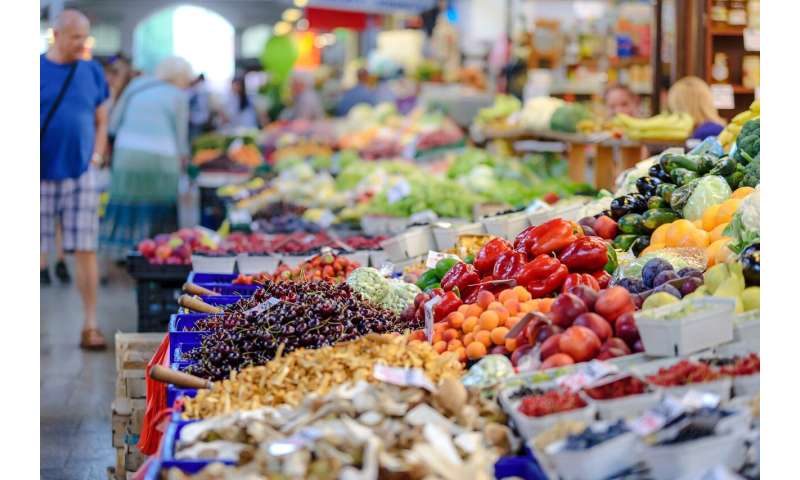Grocery shop like a cardiologist

Grocery shopping can be overwhelming given the number of choices down every aisle and deciding between what is healthy or not can add to that challenge. It is possible to stick to a healthy meal plan—you just have to plan ahead.
Here are grocery guidelines to reduce the amount of dietary fat, sugar, and salt that is associated with a higher risk for obesity, heart attack, diabetes and other diseases.
Live colorfully. Make a list that emphasizes naturally colorful foods—the more vegetables, the better—and stick to it. The produce section is made up of fresh fruits and veggies that are high in vitamins and fiber and low in fat. Avoid food made with artificial coloring and check labels on processed foods, like guacamole or pre-prepared salads with dressing, as they may contain high amounts of fat, sodium and/or sugar.
Navigating the bakery department can be tempting, but you may be surprised by how much sugar and sodium are in dinner table staples. For example: two slices of white sandwich bread may account for as much as a quarter of your recommended sodium intake. Instead, select breads made from whole grains (not whole wheat), which can lower bad cholesterol and decrease the risk of diabetes by almost a third.
Look for low-fat items in the dairy section. Be wary of flavored yogurts, which can contain up to half the recommended daily allowance of sugar. Recent research indicates that eggs are OK in moderation, just check with your doctor first.
Lean meats, like chicken, and fish are the healthiest options for animal protein. Processed meats (lunch meat or hot dogs) contain high amounts of sodium.
Use caution as you navigate the interior aisles of the grocery store. Almost everything wrapped in plastic is highly processed and loaded with fat, salt, sugar—or all three. Read the labels and look for healthier substitutes. Be aware of serving sizes per package. For example: canned soups are sometimes advertised as low sodium, but if the serving size is half a can, finishing the full can in one sitting will give you a double dose of sodium. Nuts and dried fruit are safe bets.
Source: Read Full Article
